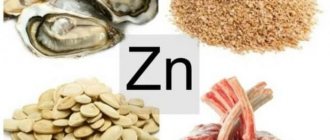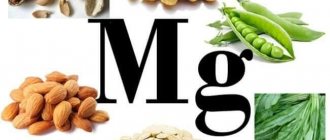Spices and herbs have become an integral part of cooking; most dishes cannot be prepared without them. One of the most aromatic spices is oregano, which was well known to even our most distant ancestors; in common people it is often referred to as oregano.
For many of us, the delicate taste and alluring aroma of this spicy plant are often associated with childhood and the gentle voice of our grandmother, with whom she called us to drink tea with oregano and strawberry jam.
But contrary to popular belief, oregano is added not only to tea, this spice goes well with first and second courses, it is added to desserts, and fresh herbs are good for fresh vegetable salads.
What is oregano
Oregano is a spicy herbaceous plant of the Lamiaceae family, a perennial plant, distributed mostly in Europe. In Russia it grows in all regions, with the exception of the northern part of the country. The plant is unpretentious, but prefers well-lit open places.
What does the plant look like?
The height of common oregano (another name is Origanum vulgare) reaches an average of 60 cm. The stem is straight, slightly pubescent, branching in the upper part, the leaf blades are oblong-ovoid.
The plant looks elegant - small lilac-pink flowers are collected in large inflorescences. It grows densely and luxuriantly and easily reveals itself. In addition, during flowering, which occurs in mid-summer, oregano exudes a bright fragrance.
Taste and aroma
The aroma is peppery, slightly woody, vaguely reminiscent of the smell of fresh bark and minty freshness. The taste is spicy, with a delicate bitterness, something between lemon basil and savory.
To an inexperienced person, the taste of oregano may seem “medicinal”, which is quite justified, because it is an integral part of various herbal preparations and preparations.
Medicinal properties
The beneficial properties of oregano have been used by healers since antiquity, and therefore they cannot be overestimated. Today, medications with proven effectiveness are made on its basis, but in most cases it is not at all necessary to resort to their use. Regular consumption of spices in dishes and drinks also has a beneficial effect on the body:
- strengthens the immune system;
- has anti-inflammatory and antiseptic effects;
- stabilizes digestion and metabolism processes;
- eliminates swelling;
- normalizes blood pressure;
- has a mild calming effect;
- relieves muscle and joint pain;
- relieves insomnia.
The spicy plant contains a unique compound – carvacrol, which is a natural antibiotic. Modern research has shown its high effectiveness against the majority of microbes resistant to a number of synthetic antibiotics, which is a step toward the emergence of a new generation of drugs.
Botanical description
The height of oregano is from 30 to 60 cm. The rhizome is oblique, creeping.
The stems are branched, tetrahedral, with slight pubescence. Over time, mature stems become woody at the base.
Oregano leaves are opposite, petiolate, oblong, pointed. They have a soft, fuzzy structure. Located along the entire length of the tender stems, decreasing in size towards the apex.
The flowers form dense, numerous shields. Corolla pale purple.
The fruit consists of four nuts.
Use in cooking
Oregano is used everywhere in cooking, but mostly in the Mediterranean countries. In Russia, tea is prepared using it; in Rus', it was customary to treat guests to kvass with oregano. In the Caucasus, the spice is used for pickling vegetables and mushrooms.
What dishes are they added to?
Oregano seasoning has won the approval of many famous chefs. Without this spice it is impossible to imagine Italian, Greek, French cuisine. It goes well with legumes (beans, peas, lentils) and can brighten up the taste of peas and bean soup.
Dry oregano is best suited for meat; it harmonizes with beef, pork, lamb, and chicken. It is added to minced meat for cutlets or homemade sausages. It is also used to complement dough for baking bread or sweet rolls.
The French prepare the famous ratatouille with the addition of spices, which bring out the taste of stewed and baked vegetables in a special way. When fresh, it is added to salads and dessert dishes based on fruits and berries, and served with cheeses.
Oregano goes well with tomatoes, champignons, potatoes, hot cheese dishes, fish and seafood (usually used for baking), egg and cottage cheese dishes - casserole, omelet.
In Italy, the spice is an indispensable component in the recipes of pasta, pizza, lasagna, ravioli, and ham. It is added to salads, sauces and light cold snacks.
What spices does it go with?
Along with oregano, the use of other herbs and spices requires culinary knowledge and experience due to the specificity of the first. So, for example, it’s bad with garden herbs - dill and green onions, as well as turmeric. The spice harmonizes well:
- with rosemary;
- basil (best with lemon and green);
- thyme;
- black, white, allspice;
- tarragon;
- celery;
- bay leaf;
- mustard seeds.
What to replace
It is difficult to achieve identical taste in a culinary composition, but if the spice is missing, you can replace oregano in the recipe with one of the following spices:
- marjoram (a garden type of spice) is a universal option, suitable for all dishes that contain oregano in the recipe;
- thyme - when preparing meat and legume dishes;
- a mixture of peppermint and dried basil - when preparing pasta and pizza.
An alternative to adding spice to a Greek salad is dried marjoram or fresh basil.
Features of use
Oregano is a very aromatic herb; when used in large quantities, it can “eclipse” the natural taste of a dish.
The spice should be added no earlier than 5-7 minutes before the end of cooking, because prolonged heat treatment destroys its beneficial properties.
Before using fresh oregano, it is preferable to tear it with your hands rather than chop it with a knife, so the essential oils in the plant evaporate more slowly and the oregano will impart all its aroma to the dish.
Medicinal properties of oregano
The leaves and flowering stems, rich in essential oils, have strong antiseptic, antispasmodic, carminative, and choleretic properties. The diaphoretic and expectorant properties of oregano help in the treatment of colds and flu.
Oregano is the most powerful natural antibiotic ever studied. In addition to its fungicidal effect, it has blood thinning properties and can be used to prevent stroke and heart attack.
Oregano lowers blood pressure and pacifies tachycardia, thus protecting both the heart and blood vessels.
Oregano for cough
During laboratory studies, it turned out that even antibiotic-resistant strains of bacteria do not have protection against the active ingredients of oregano. Its essential oil contains two main compounds: thymol and carvacrol. They thin mucus in the lungs and relieve spasms in the bronchi. Thymol is included in some pharmaceutical cough preparations. It is similar in structure to menthol, which is found in peppermint and, like it, relaxes the smooth muscles of the throat and stomach.
For coughs, oregano tea should be consumed sweetened several times a day.
Sore throat
The most common cause of a sore throat is a cold or flu. The first symptoms of a sore throat are only really felt when it is already too late. Inflammation is indicated by an unpleasant sore throat and pain when swallowing. The components of oregano are ideal against sore throats: they kill germs, relieve inflammation and accelerate the healing of a sore throat. It contains beta-caryophylline, a substance that inhibits inflammation. The decoction is used as a gargle for inflammation of the tonsils.
Gynecology
Another name for oregano, mother, justifies its use in gynecology. Motherwort was widely used for women's diseases as a hemostatic agent after childbirth. Oregano is a fairly universal remedy in gynecology:
- it enhances lactation in nursing mothers;
- alleviates the condition of women during menopause;
- an infusion of the herb is used for vaginal douching for genital itching, leucorrhoea, and colpitis.
Oregano oil inhibits the growth of Candida albicans, yeast-like fungi that cause thrush. It contains thymol and carvacrol, which are powerful antifungal agents.
Diseases of the gastrointestinal tract
Thanks to borneol and caffeic acid, oregano stimulates the production of gastric juice, improves digestion, and relieves inflammation of the mucous membrane during gastritis. An upset stomach can be cured by drinking a glass of milk or juice mixed with 2 or 3 drops of oregano oil. The compounds of carvacol and thymol act as antibacterial and antispasmodic agents and stimulate the flow of bile in the gallbladder.
Oregano has a beneficial effect on gastritis with reduced secretory activity, cholecystitis, anorexia, chronic enterocolitis, enhances intestinal motility, prevents nausea and vomiting, and normalizes the process of fat breakdown.
Skin diseases
Skin is an indicator of our internal state. To achieve an effect in the treatment of skin diseases, you need to use oregano preparations not only externally, but also orally to cleanse the virus from the inside and strengthen the immune system. This humble plant can be effectively used to treat and inhibit numerous skin conditions:
- ringworm;
- nail fungus;
- mycosis and eczema - one of the most unpleasant skin diseases.
For nervous disorders
It has been experimentally proven that oregano preparations have a calming effect on the central nervous system. Aqueous infusions of oregano herb are used internally as a sedative for neuroses and insomnia. Research shows that consuming oregano can increase production of the hormone progesterone.
Oregano has been shown to be one of the key herbs that binds to intracellular progesterone receptors and stimulates its release. Progesterone plays a role in several body functions, from maintaining normal sleep patterns to normalizing blood sugar levels and even stimulating the formation of new bone tissue.
Treatment with oregano should be used as an additional remedy, and not as independent therapy for major depression. If you suffer from severe depression, seek help from your doctor.
Prostate
Researchers at Long Island University have discovered that oregano contains an ingredient that can be used to treat prostate cancer, the second leading cause of cancer death in men.
Carvacrol is the same ingredient that causes apoptosis or “suicide” of prostate cancer cells.
Oregano for men may have a side effect in the form of decreased libido.
Spicy recipes
Although in Russia oregano is not such a favorite spice as, for example, black pepper, garlic and dill, it is increasingly becoming a regular in the home kitchens of cooks. There are many recipes in which it serves as the main aromatic element to improve the taste of the dish.
Stuffed zucchini with ricotta cheese
- zucchini - 3 medium fruits;
- tomatoes – 2 pcs.;
- ricotta cheese – 250-300 g;
- cream cheese – 100 g;
- garlic – 3 cloves;
- chicken egg yolk – 2 pcs.;
- onion – 1 head;
- breadcrumbs – 100 g;
- chopped fresh oregano, parsley, mint - 2 tsp each. each;
- salt, black pepper - to taste.
Cut the zucchini into halves, remove the seeds, leaving the walls about 1 cm thick. In a frying pan, fry the chopped onion and garlic until golden brown, add the diced skinless tomatoes and simmer a little.
In a separate container, mix ricotta, crackers, chopped herbs and yolks, add stewed vegetables, salt and pepper to taste, mix the filling thoroughly.
Using a pastry brush, brush the inside of the zucchini with olive oil, place on a baking sheet and bake for 7-10 minutes, then remove from the oven and let cool slightly. Next, place the filling on each of the halves, top with grated cream cheese and bake for 10-15 minutes until golden.
Chickpea flour pancakes
- chickpea and whole grain flour - 300 g each;
- egg – 2 pcs.;
- dried oregano – ½ tsp;
- olive oil – 20 ml;
- water – 100 ml;
- milk – 200 ml;
- salt, sugar - to taste.
Beat eggs with salt and sugar, add spices, butter, milk and water, mix thoroughly. Sift the flour, gradually add it to the main mass, stirring until the dough is smooth, then let it stand for 30 minutes.
Bake pancakes in a preheated frying pan greased with olive oil. Serve with sour cream or natural unsweetened yogurt.
Warm pumpkin salad
- pumpkin – 500 g;
- arugula – 1-2 bunches;
- butter – 3 tbsp. l.;
- dried oregano – ½ tsp;
- curd cheese – 100 g;
- pine nuts – 3 tbsp. l.;
- salt, black pepper - to taste.
Cover a baking sheet with parchment paper, peel and cut the pumpkin into cubes, add oregano, salt and pepper to taste, place on a baking sheet, spread butter on top and bake for 15 minutes at 200°.
Place arugula leaves on plates, then warm, not cooled pumpkin, then cottage cheese and nuts, sprinkle a little olive oil on top.
How much and when to add oregano so as not to spoil the dish?
Experienced chefs note that oregano should be added carefully, as it has a bright aroma and rich taste that can overwhelm the other flavors of the dish. First, you need to put spices on the tip of a knife, and then, after testing, add more if necessary.
There is a dosage of herbs that experts recommend sticking to. So, for example, in 1 liter of soup put no more than 5 g of seasoning, and in 0.1 liter of sauce - 3 g. For 1 serving of salad, use no more than 2 g of spice, and for pizza - 5 g. For 0.5 kg of meat no more than 8 g of minced meat is required.
When cooking first courses, for example, the matryoshka is placed at the end, 15-20 minutes before. before turning off, and for desserts - 10 minutes. before serving. If you are preparing a stew, then the herb, raw or dried, is added at the end of cooking.
Add oregano to salads made from vegetables, cheese or fruits 60 minutes before. before serving. If there is a desire to saturate the taste of oil or vinegar with spices, then place the amulet there 3-5 days before using liquids in cooking. Before use, both oil and vinegar must be strained to remove the spice.
Preparation and storage
Spicy herbs are collected during flowering, because during this period the beneficial phytonutrients in the plant reach their highest concentration.
The upper parts of the shoots are cut off along with the leaves and inflorescences, washed under running water and dried well until brittle on all sides, turning the stems over from time to time, then crushed.
The spice is stored for 2 years in linen bags; a glass container with a tight-fitting lid is also suitable for this purpose.
Growing oregano
Growing oregano is not a difficult process, as it does not require special care and grows well both indoors and in the garden; propagated by both seeds and cuttings. Choose a sunny place for it. The best time for planting is spring or early autumn.
Planting oregano begins with growing seedlings in small containers. You need to fill the containers with nutritious soil and moisten them. Make holes in the ground and place oregano seeds in them and sprinkle with soil. Cover the container with plastic. Don't forget to ventilate and moisten the crops.
After germination, the polyethylene can be removed. You need to transplant seedlings into open ground in May, when warm weather sets in. The distance between future bushes should not be less than 20 cm.
Oregano care involves providing adequate light and well-drained soil. It is unpretentious, drought-resistant and does not require feeding.
Oregano is a perennial plant and will produce new shoots every spring. To stimulate this process, prune last year's branches in the spring. Growing oregano will allow you to have your own supply of this medicinal herb.
Interesting Facts
- The plant is rich in vitamin C (more than 500 mg per 100 g of green mass).
- Hippocrates knew what oregano was; he used it to heal skin damage and relieve inflammatory processes in his patients.
- In some European countries it is used in the production of beer.
- Abuse of spice can cause decreased erection in men.
- The smell of the plant repels moths well.
- Its essential oils are used to create aromatic compositions and fragrances in cosmetology and perfumery.
- In ancient times, oregano was a symbol of love and passion, as evidenced by various paintings in which Aphrodite was depicted with a flowering branch of the plant.
Contraindications
Oregano is not recommended for consumption:
- for ulcers, gastritis, diseases of the duodenum;
- increased stomach acidity;
- individual intolerance, allergies;
- pregnancy.
People with low blood pressure or problems with the cardiovascular system should consult a doctor before use.
If consumed excessively, side effects may occur in the form of potency problems, skin irritations, and stomach dysfunction.
What can be replaced?
If the recipe includes oregano, but you don’t have it on hand in its pure form, you can replace the herb.
Most often, instead of oregano, they use:
- basil+mint;
- cilantro;
- marjoram;
- dill + parsley;
- thyme;
- tarragon.
At the same time, you need to remember that cilantro is replaced with matryoshka only when preparing Greek salad, and tarragon is used for pizza. In addition, you can use a mixture of seasonings such as “Herbs de Provence” or “Curry”, which initially includes oregano.






